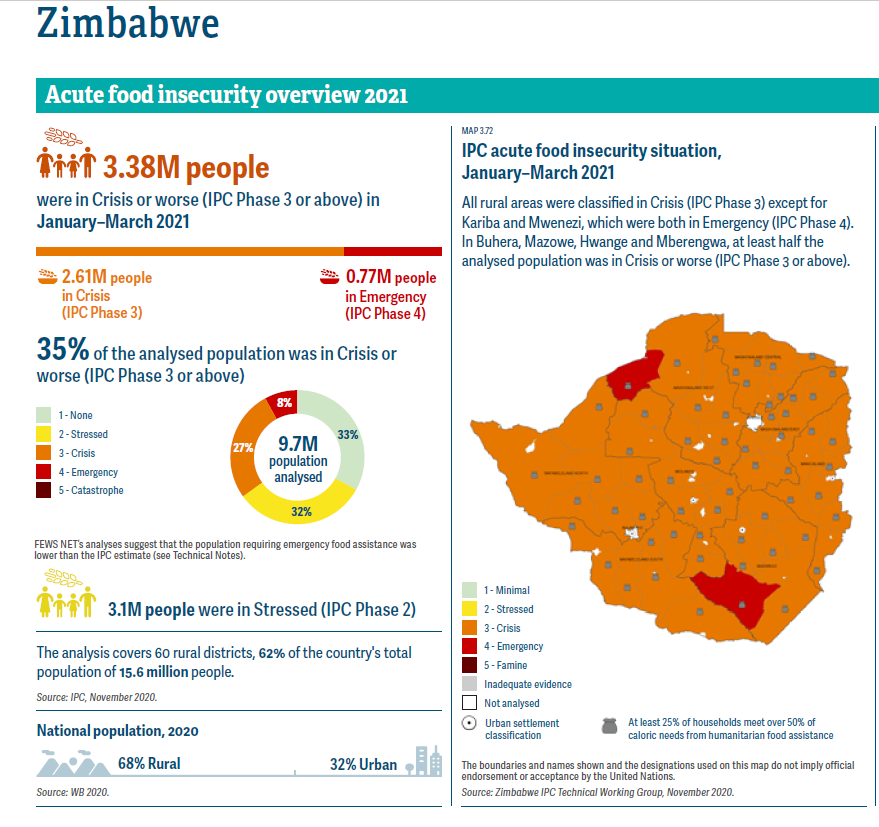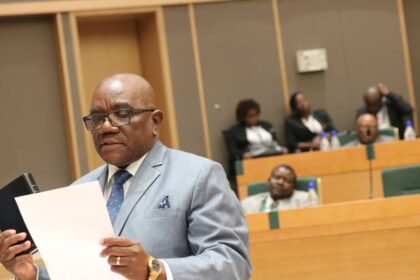By Pearl Matibe in Washington DC
As the intense battle raged on in Ukraine, in the central part of Eastern Europe, United States Secretary of State, Antony Blinken chaired a meeting in the geopolitical context he called, “the greatest global food security crisis of our time.”
Secretary Blinken while acknowledging that the food crisis has affected many countries, made worse by the COVID-19 pandemic, pointed out the factors driving today’s food insecurity crisis on the President of the Russian Federation, Vladimir Putin.
In his remarks delivered from New York, he said, “the Russian Government’s unprovoked invasion of Ukraine, which, according to the World Bank, may drive 40 million additional people worldwide into extreme poverty and food insecurity this year. Indeed, every driver of the crisis that we’ll discuss today has been made worse by President Putin’s war of choice.”
The U.S. Department of State Spokesperson, Ned Price’s office released a statement a day prior to the meeting confirming, Secretary Blinken’s schedule.
His mid-week, May 18 agenda included meeting, “with senior officials from the Democratic Republic of the Congo, Egypt, Gabon, Ghana, Kenya, Mauritania, Nigeria, South Africa, Zambia, and Senegal.” Additional aims of the “Global Food Security Call to Action” Ministerial was a focus on strengthening global food security, nutrition, and resilience.”
Zimbabweans will find that they need their individual households and livelihoods supported, particularly in rural areas, due to severe food insecurity.
Meanwhile, the U.S., “as Chair of the Global Food Security Ministerial Meeting, announced an additional, “$215 million in new emergency food assistance.”
Secretary Blinken said, “We expect our Congress very soon to approve approximately $5.5 billion in additional funding for humanitarian assistance and food security.”
There is a food crisis looming for Zimbabwe and additional complex challenges.
Crisis in sight
A report that has triggered renewed global attention on food insecurity was released by the World Food Programme.
The sixth edition of the Global Report on Food Crises was produced jointly by the Global Food Network Against Food Crisis and the Food Security Information Network.
The Report indicates that Zimbabwe is one of the “Countries that requested external assistance for food and/or faced shocks as assessed by FAO‑GIEWS in 2021, at least once in the past three years or for at least three years in the past ten years.”
While favourable rainfall improved cereal and livestock production in many areas, including Zimbabwe, tropical storms, torrential rains and floods damaged crops in Mozambique, Zimbabwe, Eswatini and Malawi, the report confirms.
The majority of people in crisis or worse in Zimbabwe in 2021, were about 3.4 million.

“All rural areas were classified in Crisis (IPC Phase 3) except for Kariba and Mwenezi, which were both in Emergency (IPC Phase 4). In Buhera, Mazowe, Hwange and Mberengwa, at least half the analysed population was in Crisis or worse (IPC Phase 3 or above),” the report found.
The ACAPS states that “An estimated seven million people are in need of humanitarian assistance in Zimbabwe because of the economic crisis that started in 2008, characterised by hyperinflation and increased poverty levels, and an unstable political situation following the Zimbabwean army’s removal of President Robert Mugabe in November 2017.”
ACAPS—an independent, humanitarian needs analysis provider— says, by March 2022, “the already high inflation rates, the disruption of fuel and food imports resulting from the conflict in Ukraine has led to a rise in petrol and diesel prices (by 16 and 17 USD cents per litre respectively as of 9 March). Wheat prices have increased by 15% during the first week of March.”
The FEWS Network predicted a “Below-average harvest and above-average prices likely to result in an early onset of the next lean season.”
FEWS NET draws on decades of data and information on livelihoods, household vulnerability, nutrition, trade, and agro-climatology, as well as an array of other sources.
But what is food security? FEWS Network provides the definition that it’s, “a situation where all people, at all times, have physical and economic access to sufficient, safe, and nutritious food to meet their dietary needs and food preferences for an active and healthy life.
These conditions are underpinned by the “four pillars” of food security: availability, access, utilization, and stability.
Availability, access, and utilization are hierarchical, in that food availability is necessary but not sufficient for access, and access is necessary but not sufficient for utilization.
Chronic food insecurity is typically due to a complex combination of some or all of the four pillars, resulting in long-term lack of sufficient food in quantity or quality.”
On aggravating factors, Secretary Blinken said in remarks to the Food Security Ministerial, “It was this growing crisis that led Ambassador Thomas-Greenfield to make the nexus between food security and conflict the focus of a UN Security Council meeting that she chaired in March of last year. And it’s why the United States made robust commitments at the secretary-general’s UN Food Systems Summit last September.”
He went on to say, “All of that – all of that was before the Russian Government’s unprovoked invasion of Ukraine, which, according to the World Bank, may drive 40 million additional people worldwide into extreme poverty and food insecurity this year. Indeed, every driver of the crisis that we’ll discuss today has been made worse by President Putin’s war of choice.”
A May 18 statement issued by Ned Price’s Office of the Spokesperson says, “Shortages of fuel and fertilizer in many countries and accelerating spikes in food prices threaten to destabilize fragile societies, increase hunger and malnutrition, drive migration, and cause severe economic dislocation.”
On key drivers of the crisis, the 2022 Global Report on Food Crisis cites economic shocks, the COVID-19 pandemic, extreme climate events, and crop pests in, “some parts of Manicaland, Matebeleland North, Midlands and Masvingo provinces.
Also, “Average to above-average crop production in some countries, such as Malawi and Zimbabwe, kept staple food prices below their 2020 levels for most of the year, supporting food access among market-dependent households.” Despite favourable rainfall, “Torrential rains and floods affected over 500 000 people [in Southern Africa] and damaged over 219 000 hectares of farmland, including in Mozambique, Madagascar, Zimbabwe, Eswatini and Malawi.
Now with the Russia-Ukraine war in its 13th week, Zimbabwe is feeling the pinch. The capital cities of Harare and Kyiv are about 11,088.2 km from each other, and Harare is about 10, 10,627.5 km from Mariupol, in the Donetsk region in southern Ukraine where fighting is fiercest.
While Western media report, “Zimbabwe’s President Emmerson Mnangagwa is trying to emulate Russian President Vladimir Putin in his attempt to revive Africa’s worst-performing currency,”
On the bright side, The U.S. released a joint statement with the 10 African countries on their Roadmap for Global Food Security–Call to Action. Countries at the Ministerial meeting pledged to “act with urgency, at scale, and in concert to respond to the urgent food security and nutrition needs of millions of people in vulnerable situations.”
The Ministry of Foreign Affairs of Belarus published in its Annual Review of Foreign Policy of the Republic of Belarus and Activities of the Ministry of Foreign Affairs in 2019 that, “Our relations with Zimbabwe were dramatically intensified as a result of the visit of President Emmerson Dambudzo Mnangagwa to Belarus (January 17). The parties reached agreements on the implementation of major contracts and joint projects in Zimbabwe.”

Russia-Zimbabwe diplomatic relations date back decades to the liberation struggle for independence from Britain. When the Soviet Union helped the political party led by Joshua Nkomo, the Zimbabwe People’s Union (later called the Patriotic Front) and the Zimbabwe National African Union, which was led by Robert Mugabe.
President Emmerson Mnangagwa strengthened ties further with Moscow in 2019 when several agreements and Memoranda of Understandings were signed with President Vladimir Putin in Moscow.
Following the consultations, an exchange of documents signed during the official visit of the President of Zimbabwe to Russia took place in the presence of the leaders of the two countries.
The signed documents included an agreement between the Russian Federation and the Republic of Zimbabwe on extradition and an intergovernmental agreement on mutual protection of intellectual activity results and intellectual property protection in the course of bilateral military-technical cooperation.
The signed documents also concern cooperation in the sphere of countering the legalisation (money laundering) of criminally obtained proceeds and the financing of terrorism, the project for developing the Darwendale platinum group metal deposit and the supply of fertilisers to African markets.
Washington, DC-based foreign correspondent, and media commentator with expertise on U.S. foreign policy and international security issues. You may follow her on Twitter: @PearlMatibe


